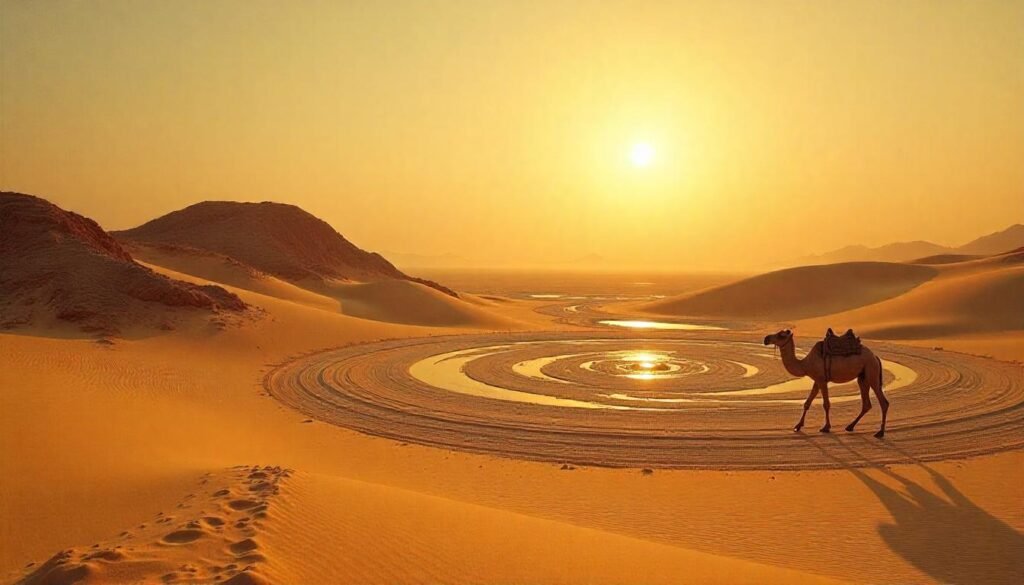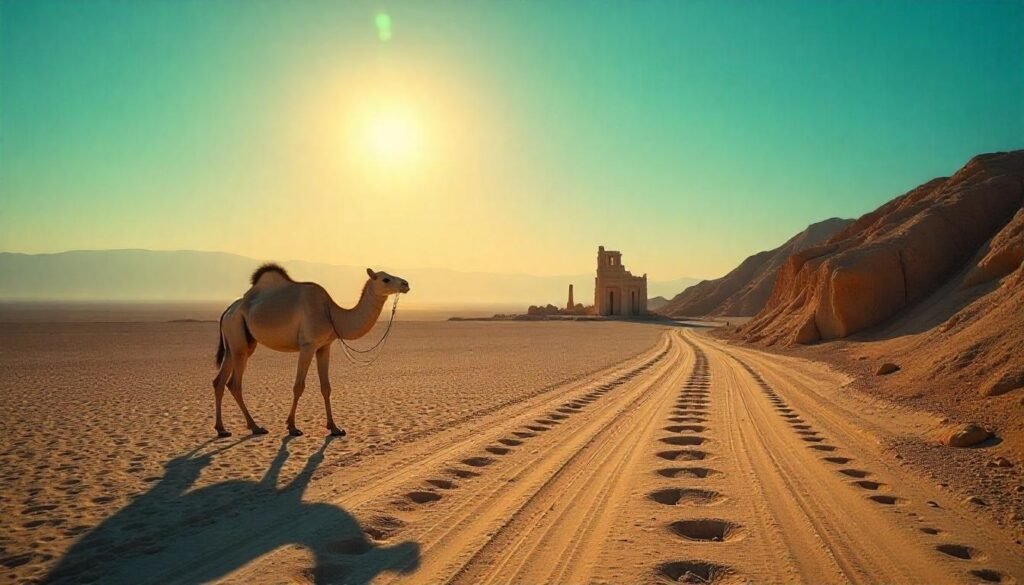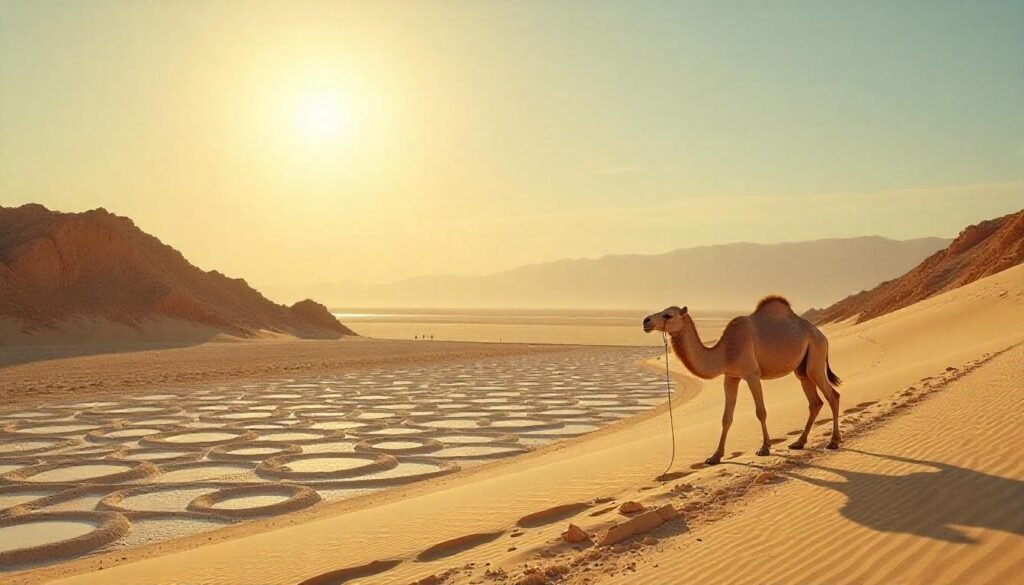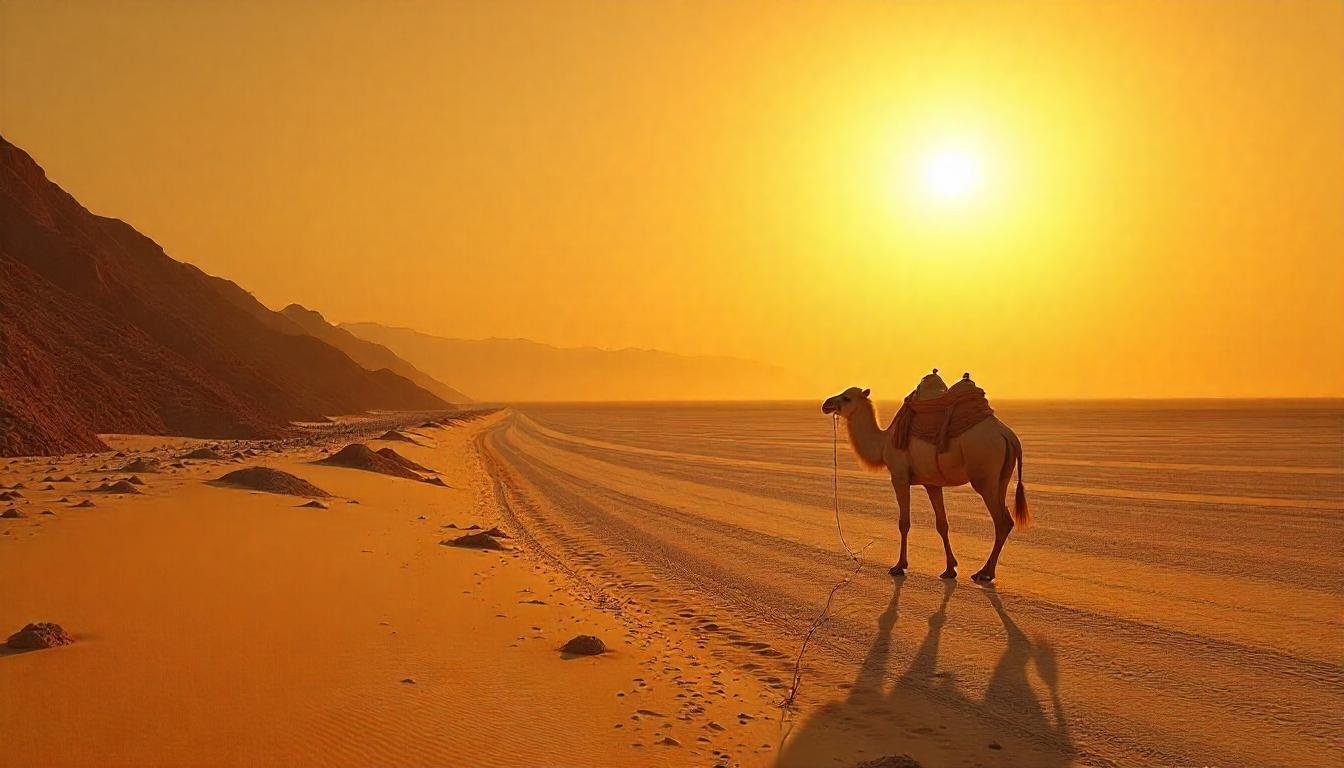In the heart of one of the most unforgiving deserts on Earth lies a place that once teemed with life, trade, and secrets—Lop Nur. Today, it’s a desolate, shimmering salt flat scorched by the sun and scarred by history. But once, this mysterious region was a lifeline along the legendary Silk Road, a cradle of civilization, and the epicenter of China’s nuclear testing program. Its transformation from a vital water source to a ghostly basin isn’t just a geological tale—it’s a haunting story of change, resilience, and rediscovery.
Let’s journey through the sands of time and uncover the many layers of Lop Nur, also spelled Lop Nor, a name that continues to stir curiosity, awe, and caution.
The Geography of Ghost Waters
A Once-Mighty Lake in the Middle of Nowhere
Nestled between the Taklamakan Desert to the west and the Kumtag Desert to the east, Lop Nur was once a large, fluctuating salt lake in the eastern Tarim Basin of Xinjiang, northwestern China. For centuries, it acted like nature’s barometer—its existence depended entirely on the Tarim River and other inflows, which swelled with snowmelt from the Tianshan, Kunlun, and Qilian Mountains.
But by 1970, the shimmering waters that had once stretched across this vast landscape were gone. What happened?
The diversion of rivers for agriculture and reservoir projects had choked the lifeblood of Lop Nur. What remained was not a lake, but a salt-encrusted memory. Today, satellite images show mesmerizing concentric rings—like ripples frozen in time—formed by evaporated water leaving behind mineral deposits.
Biography Table: Lop Nur
| Attribute | Details |
|---|---|
| Name | Lop Nur (also spelled Lop Nor) |
| Location | Eastern Tarim Basin, Xinjiang Uyghur Autonomous Region, Northwestern China |
| Type | Former salt lake (now dried up) |
| Geographical Features | Located between Taklamakan and Kumtag Deserts; Endorheic basin; formed concentric salt rings visible from satellites |
| Historical Names | “Wandering Lake” due to shifting water course; near ancient city Loulan |
| Significance | Ancient Silk Road hub, site of lost Loulan kingdom, location of Tarim mummies |
| First Nuclear Test | October 16, 1964 – China’s first nuclear bomb test conducted here |
| Last Nuclear Test | 1996 – Before China signed the Comprehensive Test Ban Treaty (not ratified) |
| Modern Uses | Military base, potash mining, and wildlife reserve |
| Environmental Issues | Desertification, radiation concerns, dried-up river inflows |
| Protected Status | Xinjiang Lop Nur Wild Camel National Nature Reserve (since 2001) |
| Wildlife | Critically endangered wild Bactrian camels, foxes, wolves, rare birds |
| Explorers | Sven Hedin, Aurel Stein (early 20th century exploration and archaeological digs) |
| Archaeological Finds | Ancient Loulan city ruins, Tarim mummies, manuscripts |
| Symbolism | Environmental degradation, historical mystery, survival against extremes |

The “Wandering Lake”
Lop Nur wasn’t just any lake—it was a wandering lake, so named because of the shifting course of the Tarim River. Over centuries, the river’s endpoint bounced between Lop Nur, Kara-Koshun, and Taitema Lake, depending on hydrological changes. This ever-changing nature puzzled explorers and cartographers for generations.
Now, with its waters long gone, Lop Nur has become a symbol of environmental change—a place where a once-vibrant ecosystem slowly faded away, leaving behind desolation and silence.
Lop Nur and the Rise of Ancient Civilizations
Loulan: The City Swallowed by Sand
Lop Nur’s decline mirrored that of Loulan, an ancient kingdom whose prosperity depended on the very waters that once nourished the lake. This oasis city flourished around the 2nd century BC and became a crucial hub on the Silk Road, bridging China with Central Asia.
But Loulan’s fate was sealed as the water receded. Without its life-giving river, the city withered, and by the 9th century AD, it was gone—swallowed by the sands and lost to time.
The rediscovery of Loulan in the early 20th century by Swedish explorer Sven Hedin and later Aurel Stein reignited interest in this forgotten land. They unearthed ancient manuscripts, mummified remains, and evidence of complex urban planning—proof that this desert had once been a thriving center of trade and culture.
The Tarim Mummies: Echoes of the Past
Among Lop Nur’s most remarkable discoveries are the Tarim mummies—extraordinarily well-preserved human remains dating back as far as 1800 BCE. With European facial features and elaborate textiles, these mummies add a layer of mystery to the region’s history and hint at ancient migration routes and cultural exchanges along the Silk Road.
From Silk Road Crossroads to Nuclear Ground Zero
China’s Nuclear Dawn
While Lop Nur’s natural beauty faded, its strategic importance grew. In 1964, China detonated its first nuclear bomb at Lop Nur, marking its arrival as a nuclear power. Over the next three decades, the area became the country’s primary nuclear testing site, with both atmospheric and underground tests carried out until 1996.
The haunting silence of the dried-up lake made it the perfect location: isolated, uninhabited, and vast. But that legacy came at a cost—concerns about residual radiation still linger, though independent evaluations have been rare due to the area’s tight military control.

A Modern Military and Industrial Zone
Even today, Lop Nur remains off-limits to most. It’s still an active military base, monitored closely and protected from the outside world. But it’s not just the military that has an interest here.
In the mid-1990s, geologists discovered vast reserves of potash, a key ingredient in fertilizers. Mining operations quickly followed, transforming the ghost lake into a hub of modern industry. As trucks and machinery replaced camels and caravans, a new chapter of human activity began in Lop Nur—this time, driven by economic needs.
An Unforgiving but Crucial Nature Reserve
Wild Camels in the Wasteland
Amid this industrial and military use, nature has not been entirely forgotten. In 2001, the Xinjiang Lop Nur Wild Camel National Nature Reserve was established to protect one of the world’s most critically endangered animals: the wild Bactrian camel.
These hardy survivors can withstand saltwater, endure intense radiation, and live without fresh water for days—a living symbol of adaptation in an environment most would find uninhabitable. The reserve is also home to wolves, foxes, and rare bird species, eking out an existence in this arid expanse.
Lop Nur may seem barren, but it teems with resilience—a word that defines every aspect of this place.
The Environmental Cost of Progress
Desertification and Depletion
The transformation of Lop Nur is a cautionary tale about human impact on the environment. The diversion of rivers to feed distant farmlands led to the drying up of one of China’s largest inland lakes. This not only erased a natural wonder but accelerated desertification in the region, further stressing local ecosystems.
Radiation’s Lingering Shadow
Then there’s the issue of radiation. Decades of nuclear testing have raised health and environmental lop nur
remain largely unanswered. While China ceased testing in 1996 and signed the Comprehensive Test Ban Treaty, it has not yet ratified it—a detail that keeps concerns about Lop Nur’s safety on the radar.

Lop Nur: A Place That Refuses to Be Forgotten
Lop Nur is more than a dried lake or a ghost of a forgotten city. It is a mirror reflecting the choices and changes of humanity—from the ancient caravans of Loulan to the booming potash trucks of today. It’s a place that once connected East and West, then became a symbol of Cold War tensions, and now stands as a battleground between industry and conservation.
The name Lop Nur may not be as famous as other landmarks in China, but it carries a weight few places can match. It whispers stories of civilizations lost, nuclear secrets buried, and wild creatures clinging to survival.
And perhaps most haunting of all—it reminds us that even the mightiest lakes can disappear, leaving only salt and silence behind.


